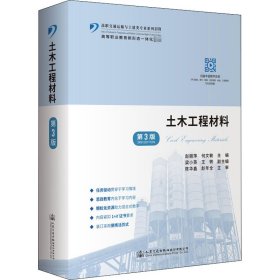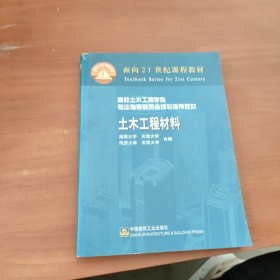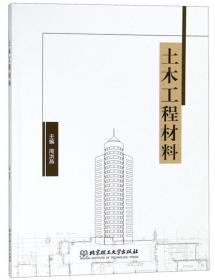
土木工程材料
全新正版 极速发货
¥ 29.4 6.0折 ¥ 49 全新
库存4件
广东广州
认证卖家担保交易快速发货售后保障
作者Zongjin Li李宗津 YameiZhang 张雅梅等
出版社中国建筑工业
ISBN9787112170531
出版时间2014-01
装帧其他
开本其他
定价49元
货号1200959328
上书时间2024-07-16
- 最新上架
商品详情
- 品相描述:全新
- 商品描述
-
目录
Chapter 1 Introduction
1.1 Historic development
1.2 Structural materials and structural design
1.3 Physical properties
1.3.1 Density, apparent density and packing density of matter
1.3.1.1 Density
1.3.1.2 Apparent density
1.3.1.3 Packing density
1.3.2 Porosity and void percentage
1.3.2.1 Porosity
1.3.2.2 Void percentage
1.3.3 Physical properties relevant to water
1.3.3.1 Hydrophilicity and hydrophobility
1.3.3.2 Water adsorption
1.3.3.3 Hygroscopicity
1.3.3.4 Water resistance (coefficient of softening)
1.3.3.5 Water impermeability
1.3.3.6 Frost resistance
1.3.4 Physical properties relevant to thermal effects
1.3.4.1 Thermal conductivity
1.3.4.2 Thermal capacity and specific heat capacity
1.3.4.3 Thermal expansion
1.3.4.4 Fire resistance and refractoriness
1.4 Chemical properties
1.4.1 Reactivity
1.4.2 Activation energy
1.5 Principles in the selection of materials
1.6 Innovations and development trends in construction materials
1.6.1 Functional materials
1.6.1.1 Cement-based piezoelectric materials
1.6.1.2 Thin-walled low frequency sound shielding material
1.6.1.3 Controllable heat insulation building products with phase changing materials (PCM)
1.6.1.4 Electromagnetic wave shielding and absorbing materials
1.6.2 Sustainability..Eco-friendly material development
1.6.2.1 Recycle and reuse of industry waste
1.6.2.2 New binders-energy efficient materials with less COe
1.6.3 Multiple disciplinary integrated materials
1.6.3.1 Nanotechnology in construction
1.6.3.2 Dynamic shading window system (DSWS)
1.6.3.3 Self-compacting concrete (SCC)
Discussion topics
References
Chapter 2 Mechanical behavior of materials
2.1 Material behavior and structural performance
2.2 Elastic behavior
2.2.1 Introduction
2.2.2 Physical basis of elastic behavior
2.2.3 Young's Modulus: definition, typical values and significance to structural design
2.2.4 Modulus of composite materials and application to reinforced concrete member
2.3 Plastic behavior
2.3.1 Phenomenon of plastic yielding
2.3.2 Physical basis of plastic behavior
2.3.3 Modeling of plastic behavior
2.3.4 Illustration of plastic behavior with a parallel system
2.4 Time dependent behavior--Creep
2.4.1 Phenomenon of time dependent behavior
2.4.2 Implications to structural design
2.4.3 Physical basis of time dependent behavior
2.4.4 Modeling of creep at low temperature with viscoelastic models
2.4.5 Strain response under arbitrary stress history superposition
2.5 Fracture
2.5.1 Introduction
2.5.2 Fast fracture: physical basis and modeling
2.5.3 Ductile to brittle failure transition of metal
2.5.4 Fatigue--phenomenon and empirical expressions
2.5.5 Physical basis of fatigue and K-based modeling
Discussion topics
Problems
References
……
Chapter 3 Aggregates
Chapter 4 Binder materials
Chapter 5 Concrete
Chapter 6 Steel
Chapter 7 Fiber reinforced polymer composites
Chapter 8 Wood
Chapter 9 Pavement materials
Chapter 10 Major non-structural materials
Construction Materials Laboratory
Index
内容摘要
本书介绍了最新的建筑材料及其生产工艺、试验方法和研究成果,独特之处在于本书介绍了建筑材料最基本的力学原理,强调了对建筑材料成分及其微观结构的研究,并针对现行标准规范提供了大量的试验课程。本书主要内容包括:概述、建筑材料性能、骨料、胶凝材料、混凝土材料、钢材、纤维增强聚合物复合材料、木材、路面材料、装饰及其他专用材料。本书可作为土木工程及材料工程专业本科生教材,也可为相关专业技术人员提供参考。
相关推荐
— 没有更多了 —






















以下为对购买帮助不大的评价